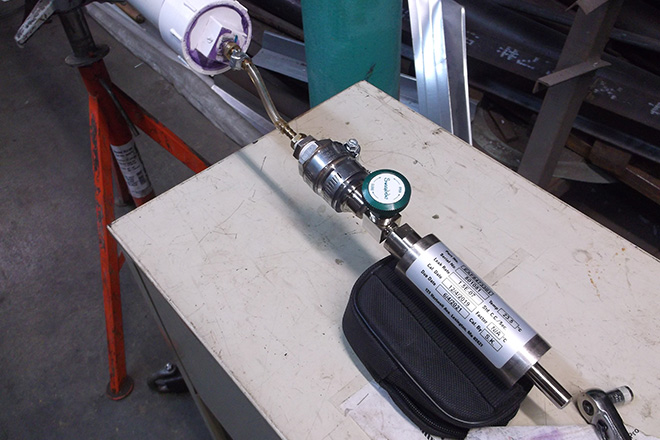Get a Handle on Leaks with Helium Leak Testing

Did you know that helium diffuses through solids three times faster than air? Our labs harness this unique quality to perform a highly specialized form of testing.
Helium leak testing is a method that employs helium as a tracer gas to detect leaks in a variety of materials. A mass spectrometer measures the concentration of helium, and pressure or vacuum are used to assist in the detection of leaks. Our expert technicians can identify even miniscule leaks using helium leak testing.
We provide helium leak and other specialized testing for clients in many industries, including electronic, pharmaceutical, automotive, chemical, aerospace, military and more. Our labs are among the few in the U.S. to offer a variety of helium testing methods to meet your unique needs, including inside-out, outside-in, bomb and hood. These methods are described below:
- INSIDE-OUT TESTING METHOD – a test vessel or part is filled with a quantity of helium and a specific amount of pressure is applied for a period of time. The vessel or part is then scanned with a hand-held sniffer probe attached to a Mass Spectrometer Leak Detector (MSLD).
- OUTSIDE-IN TESTING METHOD – In this method, helium is applied to the outer surface of the test item, which is under vacuum and connected to the MSLD. Helium leaking into the test item is detected by the MSLD. Total leakage for the entire vessel is not known, but leaks can be detected and isolated. ASTM E-498 Section 10.1 describes this process in detail.
- BOMB TESTING METHOD – Specimens are placed inside a pressure vessel and "bombed" with pressurized helium for a given amount of time. Leaks in the specimen will allow helium to penetrate, and be held for a period of time. During the holding period, the parts are checked with the MSLD equipment. This check may be accomplished with a remote "sniffer'' or by placing individual specimens inside a MSLD chamber.
- HOOD TESTING METHOD – Two techniques are available for helium hood testing:
- The test vessel is placed inside a hood or bag, which is then filled with helium. The vessel interior is then pumped down to vacuum through the MSLD, which measures helium leakage.
- Pressurized helium is placed inside the test specimen, and the hood surrounding the vessel is pumped to vacuum through the MSLD. Any helium leakage seeping through the vessel is measured via the MSLD.

Helium is the most stable of all the elements, making this a safe and accurate form of testing. And because helium is inert, it will not react with other elements during testing.
In the right hands, this unique chemical element can help ensure the structural integrity of your parts and equipment. Call IIA to find out how helium testing can work for you.




